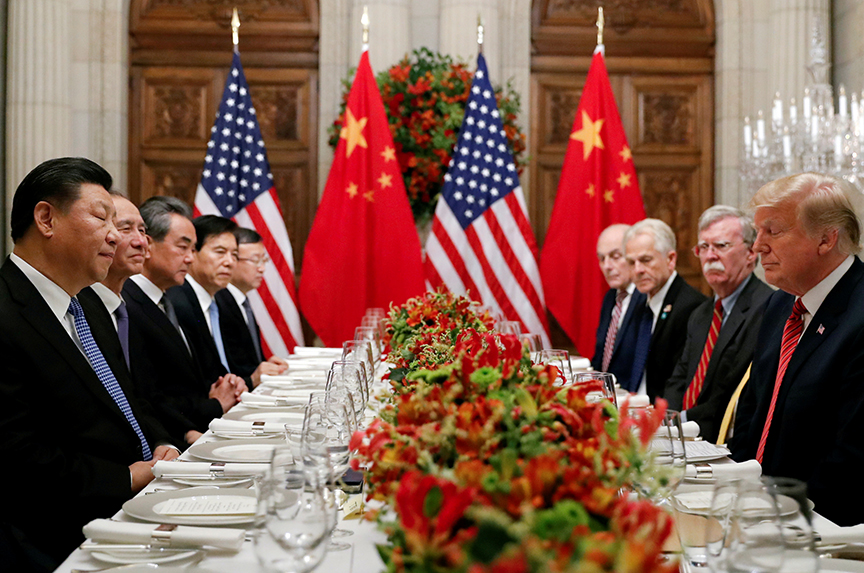Current trade negotiations between the United States and China are considerably different in character, and far broader in scope, than any engaged in by the United States since World War II. Dusting off old game plans and strategies of earlier eras will not work and will almost surely be counterproductive in addressing the profoundly consequential issues we now confront. Neither game plans and mindsets used during the Cold War, nor those used in recent and more traditional trade negotiations, are appropriate.
The confrontation first appeared to be only a trade war, characterized by mutually escalating tariffs. But as it has drawn on and intensified, it is increasingly clear that the issues are far more serious and far broader than sharply escalating tariffs—as harmful as these are to companies and consumers in both nations.
The scope of the confrontation—and the intensity of nationalistic feeling—has been revealed to be greater, and the stakes far higher. Moreover, it is not only the tariffs that are escalating, it is also the types of policies that are being mobilized by one or both nations to exert pressures on one another or reduce perceived vulnerability to one another: from spiraling tariffs, to increased investment barriers and sanctions, to various kinds of export and import restrictions on critical technologies and other items, and now, it appears, to possible countervailing measures related to exchange rates. If this course continues, we will run the risk of what is now labeled a trade war also becoming a series of investment, import/export, technology, and currency wars.
At their core, the issues between the world’s two largest economies and military powers are about aspirations, drives, and policies for preeminence in the leading technologies of the first half of the 21st century, technologies that will determine their future economic prosperity, create jobs in new industries, strengthen global competitiveness, and enhance military capabilities for decades to come.
Continued escalation, if not soon curbed and then reversed, would put both nations on a path toward Mutually Assured Disruption—and harm growth prospects for most other countries as well. It is difficult to say whether both nations are now digging in for a long confrontation—and sliding headlong into what some have labeled a “decoupling”—or are still looking for a constructive way of deescalating the conflict. A couple of months ago, it appeared that the latter was most likely. No there are growing signals that it is the former.
A more positive outcome in coming months is possible if both sides recognize that current negotiations need to resolve a number of differences that have been building for several years, and left unsettled will deepen and intensify economic conflict. At the same time both sides will need to reconcile themselves to the probability that these negotiations will not put an immediate end to all trade, investment, and technology-related disputes. At best, they can provide solutions to some and establish an agreed and enduring framework for resolving, or at least constructively managing, others in the future. This will be particularly necessary for addressing policy differences regarding support for advanced 21st century technologies in which both sides are vying for global primacy and will be assertively competing with one another for decades in regional and world markets for many decades.
More broadly, these are only part of a wider set of economic, technological, political, and security challenges that China and the United States must address in the years ahead. The two countries will need to seek an agreed and constructive framework for doing so. Whether they can manage their future relations based on common, or at least mutually acceptable, norms, rules and practices that will enable them to work together on critical bilateral and global issues even as they compete on a variety of others will remain an enormous challenge.
Robert Hormats is an Atlantic Council board member, vice chairman of Kissinger Associates Inc., and a former US undersecretary of state for economic, energy and environmental affairs.
This is the first in a series of blog posts on the US-China trade relationship in the runup to the meeting between US President Donald J. Trump and Chinese President Xi Jinping later this month at the G-20 Summit in Japan.
Image: US President Donald J. Trump (right) attended a working dinner with Chinese President Xi Jinping (left) after the G20 leaders’ summit in Buenos Aires, Argentina, on December 1, 2018. (Reuters/Kevin Lamarque/File Photo)

